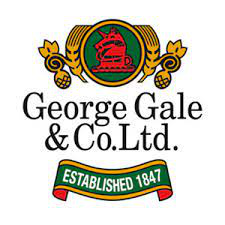
Beer is one of the oldest alcoholic drinks in the world, the most widely consumed, and the third most popular drink after water and tea. Beer is produced by the brewing and fermentation of starches from cereal grains—most commonly malted barley, although wheat, maize (corn), rice, and oats are also used. The fermentation of the starch sugars in the wort produces ethanol and carbonation in the beer. Most modern beer is brewed with hops, which add bitterness and other flavours and act as a natural preservative and stabilising agent. Other flavouring agents, such as gruit, herbs, or fruits, may be included or used instead of hops. In commercial brewing, natural carbonation is often replaced with forced carbonation.

Draught beer, also spelt draft, is beer served from a cask or keg rather than from a bottle or can. Draught beer served from a pressurised keg is also known as keg beer.

Real ale is the name coined by the Campaign for Real Ale (CAMRA) for beer that is "brewed from traditional ingredients, matured by secondary fermentation in the container from which it is dispensed, and served without the use of extraneous carbon dioxide".

George Gale & Co. Ltd was a Hampshire brewery with a distinctive range of, mainly, bitter beers. Founded in 1847 it was bought by the London brewers, Fuller's of Chiswick in 2005. The brewery was closed in 2006 with production transferred to Chiswick.

Homebrewing is the brewing of beer or other alcoholic beverages on a small scale for personal, non-commercial purposes. Supplies, such as kits and fermentation tanks, can be purchased locally at specialty stores or online. Beer was brewed domestically for thousands of years before its commercial production, although its legality has varied according to local regulation. Homebrewing is closely related to the hobby of home distillation, the production of alcoholic spirits for personal consumption; however home distillation is generally more tightly regulated.

A tap is a valve controlling the release of a fluid.

A beer tap is a valve, specifically a tap, for controlling the release of beer. While other kinds of tap may be called faucet, valve or spigot, the use of tap for beer is almost universal. The word was originally coined for the wooden valve in traditional barrels. Beer served from a tap is largely known as draught beer, though beer served from a cask is more commonly called cask ale, while beer from a keg may specifically be called keg beer. Beer taps can be also used to serve similar drinks like cider or long drinks.

A refrigerator, colloquially fridge, is a commercial and home appliance consisting of a thermally insulated compartment and a heat pump that transfers heat from its inside to its external environment so that its inside is cooled to a temperature below the room temperature. Refrigeration is an essential food storage technique around the world. The lower temperature lowers the reproduction rate of bacteria, so the refrigerator reduces the rate of spoilage. A refrigerator maintains a temperature a few degrees above the freezing point of water. The optimal temperature range for perishable food storage is 3 to 5 °C. A similar device that maintains a temperature below the freezing point of water is called a freezer. The refrigerator replaced the icebox, which had been a common household appliance for almost a century and a half. The United States Food and Drug Administration recommends that the refrigerator be kept at or below 4 °C (40 °F) and that the freezer be regulated at −18 °C (0 °F).

A keg is a small cask.

Dogfish Head Brewery is a brewing company based in Milton, Delaware founded by Sam and Mariah Calagione and, as of 2019, owned by the Boston Beer Company. It opened in 1995 and produces 262,000 barrels of beer annually.

Beer has been brewed in England for thousands of years. As a beer brewing country, it is known for top fermented cask beer which finishes maturing in the cellar of the pub rather than at the brewery and is served with only natural carbonation.

An icemaker, ice generator, or ice machine may refer to either a consumer device for making ice, found inside a home freezer; a stand-alone appliance for making ice, or an industrial machine for making ice on a large scale. The term "ice machine" usually refers to the stand-alone appliance.

National Bohemian Beer, colloquially Natty Boh, is an American lager originating from Baltimore, Maryland. It was first brewed in 1885 by the National Brewing Company, but was eventually purchased by Pabst Brewing Company.

A Cornelius keg is a stainless steel canister (keg) originally used as containers by the soft drink industry. They can be used to store and dispense carbonated or nitrogenated liquids. Cornelius kegs were originally made by Cornelius, Inc.

A beer engine is a device for pumping beer from a cask, usually located in a pub's cellar.
Caffrey's Irish Ale is an ale launched in 1994 by Bass Brewery and currently owned by Molson Coors.
A jockey box is an insulated container containing ice and water, as well as a long coil of hollow tubing. The device is used to cool beverages being served on tap in temporary locations.

Cold brew coffee, also called cold water extraction or cold pressing, is the process of steeping coffee grounds in water at cool temperatures for an extended period. Coarse-ground beans are soaked in water for about 12 to 24 hours.

Michael Edward Ash was a British mathematician and brewer. Ash led a team that invented a nitrogenated dispense system for Guinness stout first released in 1959, which evolved to become the beer now sold globally as Draught Guinness. As the manager in charge of the Easy Serve project, Ash is credited as the inventor of nitrogenated beer. He was Managing Director of Crookes Laboratories (1962–1972) where he was responsible for securing the license for an early anti-depressant in the UK, Prothiaden.

An ultra low temperature (ULT) freezer is a refrigerator that stores contents at −40 to −86 °C. An ultra low temperature freezer is commonly referred to as a "minus 80 freezer" or a "negative 80 freezer", referring to the most common temperature standard. ULT freezers come in upright and chest freezer formats.



















